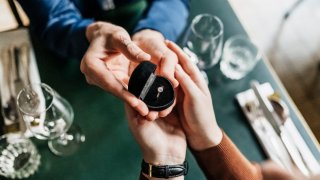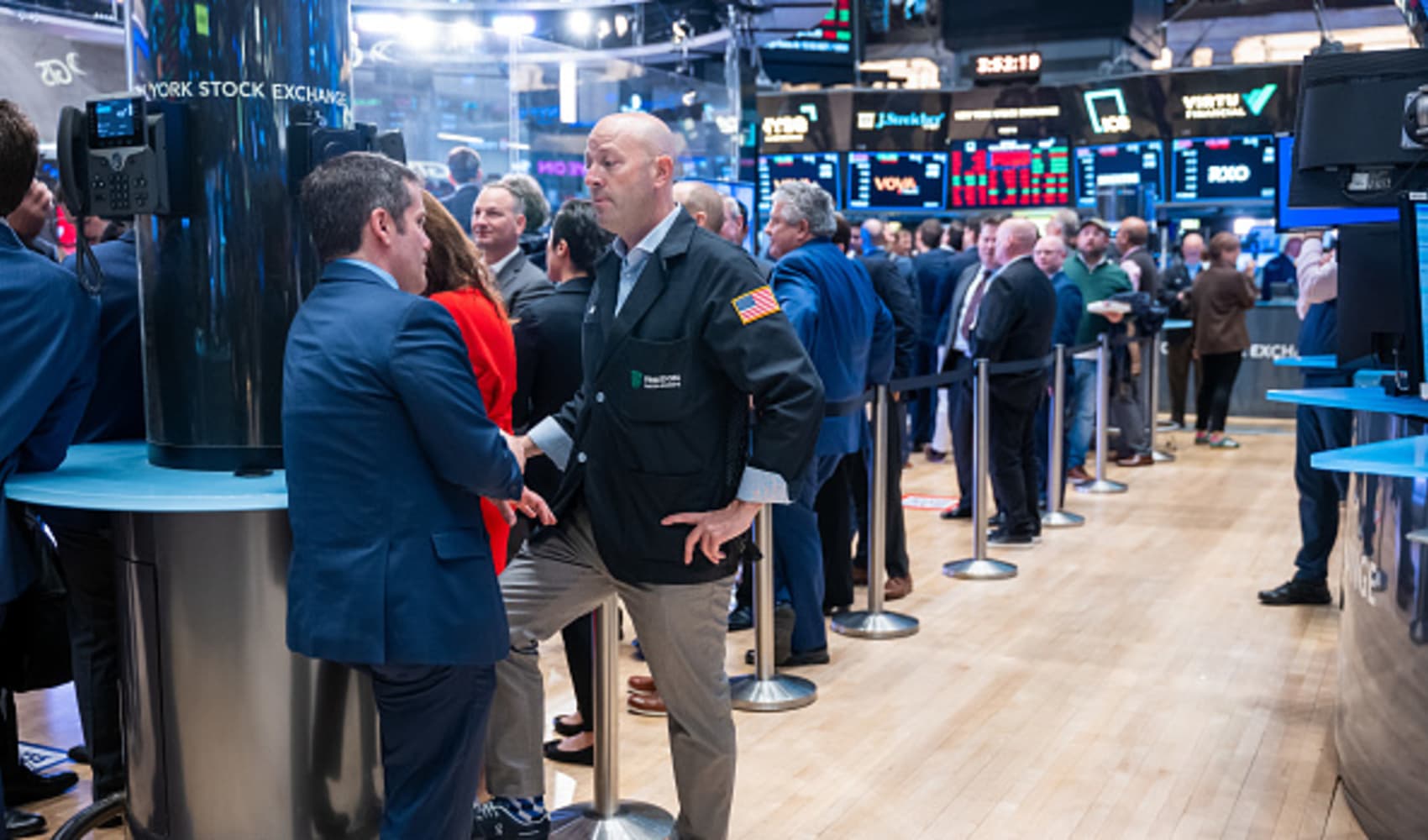
- Global sales for lab-grown diamonds increased to $12 billion in 2022, up 38% year over year, per an analysis by New York-based Paul Zimnisky, a diamond industry analyst.
- Jewelry shoppers increasingly have opted for these machine-made gems over mined diamonds because they are visibly and chemically identical — but cost far less.
- However, as lab diamond prices continue to fall, their value will not hold up as well long term as a natural diamond.
If your partner got down on one knee and asked you to marry them today, would you say yes? What if you found out the ring destined for your finger boasts a lab-grown diamond?
The chances of that engagement ring bearing a man-made diamond are higher than you might think.
Global sales for lab-grown diamonds increased to $12 billion in 2022, up 38% year over year, per an analysis by New York-based Paul Zimnisky, a financial and diamond industry analyst.
Get Tri-state area news and weather forecasts to your inbox. Sign up for NBC New York newsletters.
More from Personal Finance:
Borrow for your wedding, have 'a macaroni-and-cheese marriage'
Gen Z, millennial couples say it's too expensive to get married
Couples leverage 'something borrowed' to cut wedding costs
Ring shoppers have opted for these gems — created by subjecting pure carbon to extremely high heat and pressurization by machine — over mined diamonds because they are visibly and chemically identical but cost way less.
The catch? They don't increase in value at all.
Money Report
"It's very difficult to resell a lab diamond, and as the price gets lower, I don't think there's going to be a resale market for lab diamonds," Zimnisky said.
As the so-called engagement season — or the time between Thanksgiving and Valentine's Day, according to wedding site The Knot — approaches, consumers on the market for diamonds should look at a few considerations on what sort of jewels to invest in.
Diamonds 'a winner during the pandemic'
Consumers may have gotten federal stimulus money back in 2020 during the Covid-19 pandemic, but some "experiential luxury" such as travel and dining was still restricted due to lockdowns and other regulations. Americans instead redirected their discretionary spending to hard luxury goods such as diamonds.
"Diamonds were kind of a winner during the pandemic," Zimnisky said.
But the Covid-19 pandemic soon presented a separate challenge: a sharp decline in dating, leading to a drop in engagements.
Engagements typically occur within three years of a first date, per Signet Jewelers, the largest diamond conglomerate in the U.S. and parent company of retailers Kay Jewelers and Zales.
As fewer couples went out on dates in 2020, fewer got engaged in the last two years.
However, the company expects engagements to rebound in the coming years.
The rise of lab-grown diamonds
Meanwhile, the industry of lab-grown diamonds is "growing so rapidly that I would currently describe the market as a bubble," Zimnisky said.
The man-made diamond market is forecast to reach $18 billion in total value by 2024 as both the overall industry and supply volumes continue to grow. But as prices for man-made diamonds begin to decline, the industry is going to attract a different consumer.
"There's a lot of consumers that would love to buy diamond jewelry but maybe cannot afford it at $1,000 price points but can afford it at $100 price points," Zimnisky said.
If the industry starts to get oversaturated, man-made diamonds might come to be considered "costume jewelry" in the future, said Benjamin Khordipour, manager of Estate Diamond Jewelry in New York.
'People don't buy them because they're cheap'

Traditional mined diamonds are not a practical purchase, Zimnisky added.
"People don't buy them because they're cheap; they buy them because it makes them feel good, it's an emotional purchase, a financial sacrifice," he said.
If you opt for a lab-grown diamond, go into the store with the expectation that it — unlike a mined diamond — probably won't have any resale value.
"I know most consumers aren't thinking about that when they're getting an engagement ring, but that's just the big takeaway," Zimnisky said.
On the other hand, if you're planning on investing in a natural diamond, be very realistic with your budget, Khordipour said. Come to a realistic price point you can afford with your lifestyle.
While financing options such as wedding loans exist, it may be in your best interest to avoid going into heavy debt for a ring, he said.
If you don't have enough savings for the ideal ring, adjust to something smaller and upgrade to a grander gesture in 10 years, Khordipour suggested.
In the end, make sure you have the discussion with your loved one and come to an agreement that makes the most sense for your preferences and financial goals.
Don't miss these stories from CNBC PRO:
- 75% of Warren Buffett's equity portfolio is in just 5 stocks. Here's what they are
- These two banks just hiked their 1-year CD yield to 5.3%
- A prudent way to bet on a bounce in Apple following its post-earnings decline
- Stifel says the S&P 500 will keep climbing 'wall of worry' to hit 4,400, gives 10 stocks to play rally






